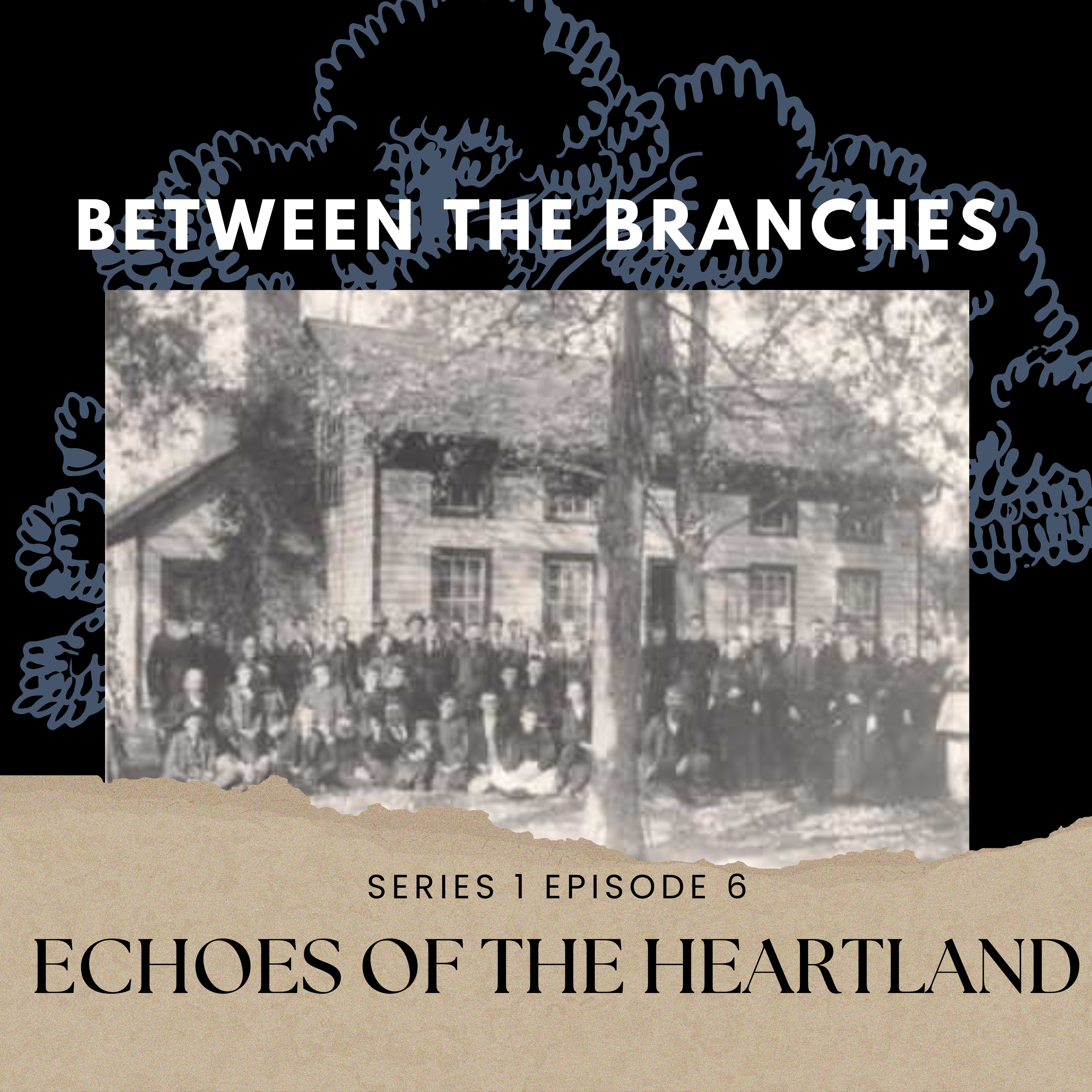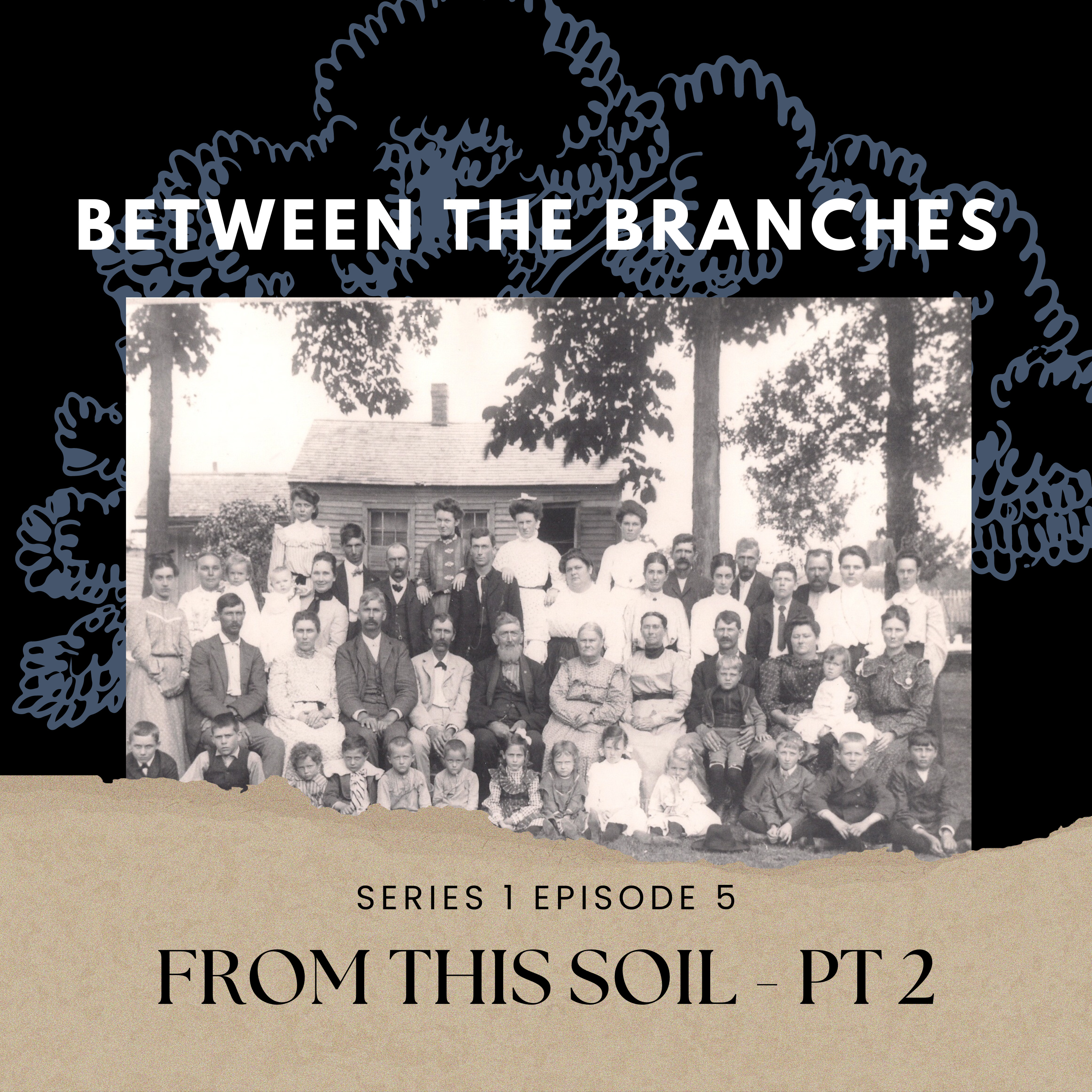This is the story of Sarah Cawood’s younger sisters - Elizabeth, Mary, Cora, and Bertha – women whose lives paint a vivid portrait of rural America at the turn of the century and the limited opportunities available to women outside of marriage, childrearing, and maintaining a household. We will see how each of their stories represents a different facet of 19th and early 20th-century rural American life.
In the rolling farmlands of Illinois, the Cawood family etched out a life life that was both ordinary and extraordinary. Leaving behind the familiar hills of Tennesee, John and Martha’s parents were drawn to Illinois by the promise of fertile land and boundless opportunity. The rich, black soils of Morgan County were a farmer’s dream. John and Martha, the parents of the women we are looking at today were sturdy pioneers of their time. They raised five daughters, five sons, and 4 grandchildren. As the seasons changed on the Cawood farm, so too did the fortunes of these sisters. Their days were filled with the rhythms of farm life – the crowing of roosters at dawn, the smell of fresh-baked bread, and the endless chores that kept the household running. But beyond these shared experiences, each sister’s story unfolded in its own unique way.
Elizabeth
Elizabeth, born in 1866, was the first to follow in Sarah’s footsteps. At 22, she married John Cooper, embarking on a life that seemed to mirror her parents’. They rented a farm in Monroe Illinois, raising six children amidst the familiar hardships of rural life. Picture a farm at the turn of the 20th century, frozen in time like a sepia photograph. The rhythms of rural life echoed those of generations past, with farmers still intimately connected to the land that sustained them. From dawn to dusk, they tended to their own fruits and vegetables, collected eggs from clucking hens, and raised livestock for meat. While city folk were beginning to marvel at the wonders of electricity and chat over newfangled telephones, country dwellers lived in a world apart. The farmhouse stood silent against the elements, untouched by the hum of modern conveniences. No central heating warded off winter's chill, nor did air conditioning offer relief from summer's swelter.
Perhaps most striking to our modern sensibilities was the absence of indoor plumbing. Imagine, if you will, the farmer's wife gathering her skirts to trudge through snow or mud to reach the outhouse, or the children tasked with hauling buckets of water from the well for the evening's cooking and bathing. These daily rituals, now long forgotten, were the heartbeat of rural life in 1900 - a life of challenges, yet rich with a connection to the land and changing seasons. The turn of the century brought a wave of deaths that shook the Cawood family to its core. Sarah, then both parents, passed away in quick succession. Elizabeth, now in her forties, found herself the family anchor.
Elizabeth and John moved to Virginia, Illinois by 1920 when John, approaching 60, found work at a flour mill. Elizabeth and John continued living in Virginia, where, by 1930, John served as a night watchman. Even though he was listed as “a special officer”, his exact role in the police is unclear. In 1931, tragedy struck when John, then 70 years old, died following an altercation with a young man who was causing a disturbance. According to newspaper reports, John attempted to break up a fight between two young men outside Michaels Cafe in Virginia. When he tried to arrest one of them, the man turned on him and struck him. The youths fled, and John entered the cafe, ordering coffee. Suddenly, he fell off his stool and died. The incident led to legal proceedings. Initially, the two young men were arrested on charges of resisting an officer. A coroner's jury returned a verdict of "death from apoplexy" and did not recommend holding the youths. However, John's family pressed for murder charges against the youth who had struck him. A post-mortem examination revealed that John had died from a blood clot under the heart. The charge was later reduced to manslaughter, and the accused stood trial. Ultimately, the jury found the youth not guilty, concluding that while John had indeed died of apoplexy, it wasn't caused by the altercation.
The loss of John must have been devastating for Elizabeth and her family. At the time, Elizabeth's younger sister Cora (whom we'll discuss later in the episode) and two young grandchildren were living with her. This living arrangement might have eased the transition somewhat, allowing Elizabeth to focus her attention on her family members. Nevertheless, one can only imagine the profound impact of losing John and the stability he had provided.
Elizabeth's household in 1940 presents an interesting picture of family support during challenging times. Her sister Cora and two grandchildren, Paralee and John, were living with her, likely due to a series of family tragedies. Mabel, one of Elizabeth's daughters, had lost her husband in 1931, leaving her a widow with children to support. This was a particularly difficult time, as welfare and other forms of assistance were not yet widely available. To make ends meet, Mabel took a job as a servant, living with and working for William Price, a 91-year-old Civil War veteran. Her work likely involved caregiving, as evidenced by her later employment in 1950 doing "general work" in a convalescent home. This suggests she either had nursing training or developed caregiving skills through experience. By 1950, Elizabeth's household had expanded further. The census shows that in addition to Mabel, it now included Paralee and her husband, as well as Mabel's other daughter Edna and her child. Remarkably, Paralee's husband Robert supported this extended family on just $342 a year, earned as a construction laborer. This arrangement highlights the economic hardships of the time and the importance of family support networks.
In the winter of 1951, Elizabeth drew her final breath, closing the final chapter of a life that had weathered countless storms. Through the decades, she had faced adversity with unwavering determination. Elizabeth's story was one of quiet heroism, found not in grand gestures, but in the day-to-day tenacity with which she faced life's trials.
Mary
Mary’s story, though shorter, burned just a bright. Born on July 24, 1868, Mary's life was marked by early responsibility and resilience. At 17, she helped care for her older sister Sarah's children when they came to live with the family. Mary married young and joyfully welcomed a daughter. But happiness was fleeting – her husband died in 1889, leaving her a widow before her 21st birthday. For five long years, Mary raised her daughter alone, a daunting task in an era with limited rights and opportunities for women. Love found Mary again in 1894 when she married Stuart Reid. Together, they built a life on a farm in Hickory, Illinois, facing the daily challenges of farm life. Despite the 30-mile distance from her sisters, one can imagine them exchanging letters, sharing news of their children, and perhaps visiting during rare moments away from farm duties.
For over three decades, Mary and Stuart worked side by side, weathering the ups and downs of agricultural life. They may have witnessed the gradual mechanization of farming, the suffrage movement gaining momentum, and the world changing around them as they tended to their land and raised their family. In 1928, after months of illness, Mary's journey came to an end. Her life, though not without its share of hardships, was rich with experiences that reflected the changing times for women in rural America. From a young girl thrust into caregiving, to a widow defying the odds, to a farmer's wife contributing invisibly but significantly to her family's livelihood, Mary Cawood Reid's story echoes the unsung heroism of countless women of her era.
Cora
Cora, born in 1870, faced her own set of challenges. Her marriage to Alvie Fletcher Seymour in 1892 seemed promising. The dawn of the 20th century brought winds of change for Cora, as her marriage to Alvie began to unravel. Sometime between 1900 and 1910, the couple separated, their story joining countless others in an era when formal divorces were rare, but desertions were whispered about in parlors and on front porches. What drove them apart? Was it the heartbreaking loss of their child, a grief too heavy for their young shoulders to bear? We may never know, but by 1908, Alvie had moved on, exchanging vows with a woman named Emma.
As Cora faced this personal upheaval, fate dealt her another cruel hand. Between 1906 and 1908, death cast its shadow over her family. First, her sister Sarah succumbed, then, in quick succession, her parents followed. With each passing, the lights of home dimmed, leaving Cora alone to navigate an uncertain future.
Picture Cora in 1910, a woman standing at the crossroads of a new decade. We find her in Jacksonville, renting a modest house at 331 E Morgan Street. In the 1910 Census, she is listed under her maiden name, divorced, and working as a cook in a restaurant. But there's more to her story than these bare facts suggest. Imagine the challenges she faced. In a world where a woman's financial security often hinged on her husband's prosperity, Cora had to forge her own path. The realm of work available to women was narrow—domestic service, personal care, perhaps a position as a waitress or, for the fortunate few, as a nurse or midwife. For Cora, the sizzle of a restaurant kitchen became her lifeline. Yet even this was a new frontier. Restaurants were just beginning to open their doors to everyday Americans, shedding their reputation as haunts for traveling businessmen. The very notion of women dining out was still novel, a small revolution happening one table at a time.
But Cora's salary as a cook was a drop in the bucket, barely enough to keep a roof over her head. So she did what many women in her position did—she became a landlady of sorts. The 1910 census reveals her clever strategy: two lodgers, a newlywed couple named William and Nora Hatfield, shared her home. Nora, as it happened, was also a waitress. One can almost picture the two women sharing early morning coffee, swapping stories of difficult customers. This arrangement wasn't just about extra income; it was about survival. In a society where women's work was undervalued, where a "living wage" was a concept reserved for men, Cora had to be resourceful. Her story, pieced together from census records and historical context, offers a glimpse into the lives of countless women who found themselves alone in a world not yet ready to recognize their full potential.
As the roaring twenties dawned, we find Cora, a resilient 49-year-old woman, embarking on a new chapter of her life at the Illinois Women's College. The 1920 census paints an intriguing picture: Cora is listed as widowed, despite her estranged husband Alvie very much alive and living with another family in Springfield. At the college, Cora found purpose as the establishment's cook - quite possibly the only one among a staff of 28. One can almost hear the clatter of pots and pans, smell the aromas wafting from the kitchen as Cora prepared meals for the aspiring young women of Illinois. This college was no ordinary institution. It stood as a testament to Jacksonville's progressive spirit, a city known for its trailblazing establishments in Illinois. The seeds of this educational haven were sown back in 1846 when the Illinois Conference Female Academy first opened its doors. Its mission? To cultivate the "intellectual and moral education" of women - a revolutionary concept for its time. Six years later, in 1852, the academy celebrated its first graduating class, marking a significant milestone in women's education.
The next decade of Cora's life remains shrouded in mystery. We lose sight of her until 1930, when the curtain lifts to reveal a 59-year-old Cora residing at 261 South Stowe Street in Virginia, Illinois. Here, she found herself part of a multigenerational household, living alongside her older sister Elizabeth Cooper, Elizabeth's husband John - a local police officer - and their grandchildren.
Cora's own journey came to an end just three years later. On September 22, 1933, at the age of 63, she drew her last breath. Her life, marked by resilience, adaptation, and quiet dignity, had spanned an era of immense change for women in America. Cora's life was a patchwork of reinvention, each piece stitched together with determination.
Bertha
In the twilight of the 19th century, young Bertha, born in 1876, found herself walking a path less traveled. As the baby of the family, she chose duty over convention, remaining unmarried well into her thirties to care for her aging parents. Little did she know that fate had a surprising twist in store for her.
The year was 1910, and Jacksonville, Illinois, was abuzz with the promise of a new decade. Amidst the bustling streets and quaint shops stood a hotel at 205 North Main Street, managed by one William Enslow, a 50-year-old proprietor with a penchant for preaching. It was here that Bertha's story would take an unexpected turn.
How exactly Bertha and William's paths crossed remains a mystery. Did their eyes meet across a crowded street, a chance encounter that would change both their lives? Or perhaps, in the wake of her parents' passing, did Bertha seek employment at William's hotel, following in her sister's footsteps in the domestic field? One can almost picture Bertha, her hands busy in the hotel kitchen, stealing glances at the charismatic owner as he went about his business. Whatever the circumstances of their meeting, the spark between them was undeniable. At the age of 34, Bertha said "I do" to a man 16 years her senior, embarking on a journey that would see her trade in her role as a dutiful daughter for that of a supportive wife.
The 1910 Census paints a vivid picture of their early married life: William, the hotel proprietor, and Bertha, now the establishment's cook, sharing their home with nine boarders. It was a bustling, lively household, filled with the comings and goings of travelers and the aroma of Bertha's cooking. But life, as it often does, had more changes in store for the couple. By 1918, they had relocated to Springfield, where William reinvented himself as both a carpenter and an evangelist with the Undenominational Mission. Through it all, Bertha stood by his side, adapting to each new role with grace and resilience.
On May 29, 1924, in the small town of Virginia, Cass County, Illinois, Bertha's journey came to an end. Bertha's life, while shorter than her sisters', was a testament to her unwavering commitment to family and her ability to embrace life's unexpected turns.
As we look back on the lives of the Cawood sisters, we're reminded that the "good old days" were far from idyllic. These women faced limited opportunities, personal tragedies, and societal constraints that would seem insurmountable today. Yet they persevered, each in her own way, weaving a tapestry of resilience that spanned generations. Their stories challenge us to look beyond the sepia-toned nostalgia of the past. In the strength of Elizabeth, the determination of Mary, the adaptability of Cora, and the dedication of Bertha, we see reflections of the countless unsung heroines who shaped America's heartland. These were women who faced each day with grit and grace, their quiet courage echoing through the years, reminding us of the power of the human spirit to endure, to adapt, and to thrive against all odds.
The legacy of the Cawood sisters lives on, not in grand gestures or historic achievements, but in the very fabric of American life - in the values of hard work, family loyalty, and unwavering resilience that continue to shape our nation. Their stories, once lost to time, now serve as a bridge between past and present, inviting us to honor the ordinary lives that, in their own extraordinary way, built the world we inhabit today.
















Share this post